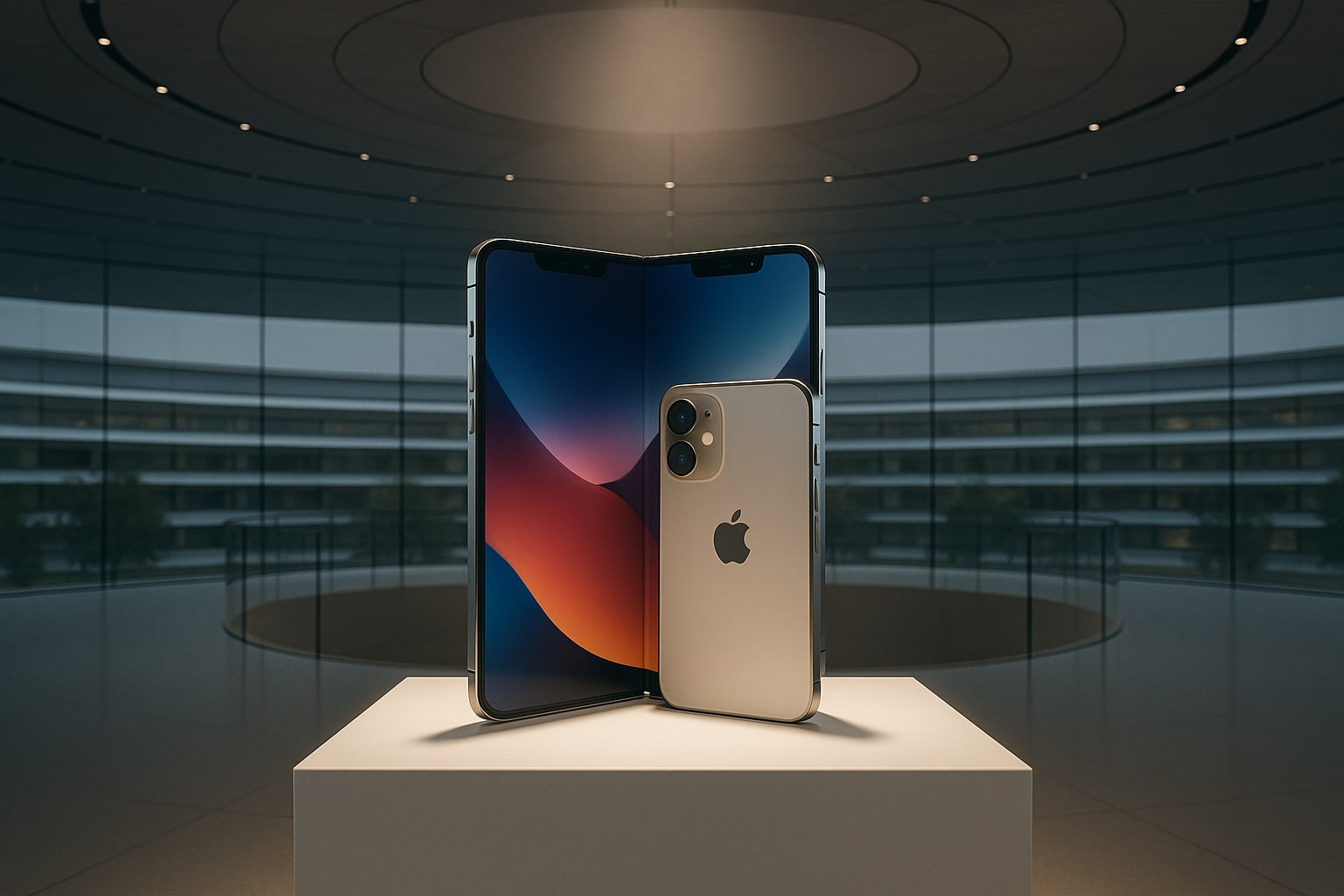It’s 24 hours since Apple launched a slew of products including AirPods Pro 3, new Apple Watch models, iPhone 17 series, and probably the highlight of them all – the iPhone Air. It marks the third time that Apple has splashed the “Air” moniker on its products, first being the MacBook Air and second, the iPad Air.
At 5.6mm thing and 165g light, Apple said it is a breakthrough design being the thinnest iPhone ever but more durable than any previous iPhone. While the device itself might be a marvel on its own, it feels more like a stepping stone toward something bigger: a foldable iPhone (P/S: above feature photo of foldable iPhone is generated using AI).

By focusing on creating the lightest and thinnest iPhone yet, Apple is likely preparing itself to tackle the added complexity of foldable designs. The balance between durability and portability will be key in any foldable iPhone, and the Air might be the testing ground for those advancements. Flexible displays require robust yet pliable materials, and the iPhone Air’s advancements suggest Apple might be inching closer to displays that can withstand folding without sacrificing quality.
Moreover, Apple has historically been cautious about adopting new technologies – preferring to wait until they are perfected before rolling out to the market. The iPhone Air’s display could be a precursor to Apple’s first flexible screens that meet its exacting standards.
Another key aspect of the iPhone Air is its use of new composite materials to achieve durability while reducing weight. Foldable devices are notorious for wear-and-tear issues, particularly at the hinge and along the fold line. And Apple’s work on the iPhone Air could be seen as a precursor to developing materials and structures robust enough to handle the stresses of hundred of thousands of folds without failure.
Indeed, Apple has filed patents in recent years for self-healing materials and advanced hinge mechanisms, further indicating its interest in foldable designs. The lightweight materials, such as titanium frame (which exceeds stringent bend strength requirements according to Apple) and Ceramic Shield, used in the iPhone Air could be the foundation for future foldables.

A foldable iPhone wouldn’t just require hardware changes—it would need software to match. For instance, foldables often offer split-screen functionality and seamless transitions between folded and unfolded states. Apple’s work on dynamic software experiences, such as Liquid Glass design with smooth transitions, in the upcoming iOS 26 (and probably future iOS) could be another sign that the company is laying the groundwork for a foldable future.
Historically, Apple has taken a deliberate and incremental approach to new product categories. Before launching the Apple Watch, Apple first focused on health and fitness features in the iPhone and the Health app. Similarly, before the iPad Pro, Apple introduced multitasking features to iOS. The iPhone Air might follow this pattern—an intermediate step that allows Apple to perfect the technologies that will eventually power a foldable iPhone.
Foldable smartphones have gained much traction in recent years, with Samsung leading the charge through its Galaxy Z Fold and Z Flip series. Chinese smartphone makers, like Honor and Oppo, have caught up with South Korean electronic giant, and in some respects outdone the chaebol. Apple has been seen lagging behind. But Apple doesn’t follow trends; it usually reshapes them.
Historically, Apple has often avoided rushing into new product categories or genres. In fact, it has a history of entering markets only when it feels it can deliver a superior experience (just think about the original iPhone). The iPhone Air might be Apple’s way of signalling that it’s getting closer to entering the foldable race.
While the iPhone Air may not fold, it’s not difficult to imagine it as a stepping stone toward that future. If and when Apple does enter the foldable market, it’s likely to do so with a device that redefines what foldables can be. For now, the iPhone Air feels like a tantalising prelude to that eventual fold.
